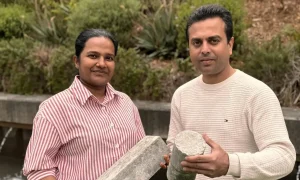Engineers at RMIT University in Australia have discovered a groundbreaking technique that uses scrap carpet fibers to create stronger and crack-resistant concrete. This innovative approach not only contributes to sustainability in the construction sector but also addresses a major challenge in concrete repairs, which cost the Australian construction industry approximately A$8 billion annually, and an estimated US$76 billion in the U.S. alone.
The research team, in collaboration with Textile Recyclers Australia, Godfrey Hirst Australia, and local councils in Victoria, has conducted field studies on slabs made from reclaimed textile materials. Dr. Chamila Gunasekara, lead researcher at RMIT University, explained that the team’s technique reduces early-age shrinkage cracking in concrete by up to 30%, while enhancing its overall durability.
Published in the Construction and Building Materials journal, the findings demonstrate that waste carpet fibers, along with other discarded textiles like clothing fabrics, can significantly strengthen concrete. The team has found that using scrap carpet fibers increases the concrete’s strength by 40% in tension, preventing early cracking and reducing shrinkage.

Gunasekara, an ARC DECRA fellow from the School of Engineering, pointed out that cracking in early-age concrete is a long-standing problem in construction. It can lead to premature corrosion and compromise the safety and structural integrity of buildings. By incorporating textile waste into concrete, the team is providing a viable solution that not only reduces the environmental impact of textile waste but also improves construction material performance.
The project also tackles the growing issue of textile waste, with Australia being the second-largest consumer of textiles per person globally. Dr. Shadi Houshyar, a textile and materials scientist at RMIT, emphasized that up to 70% of textile waste could be repurposed for use in construction materials.
With ongoing collaborations and real-world field trials, the team is further refining their method and expects it to play a crucial role in both waste management and construction sustainability.





